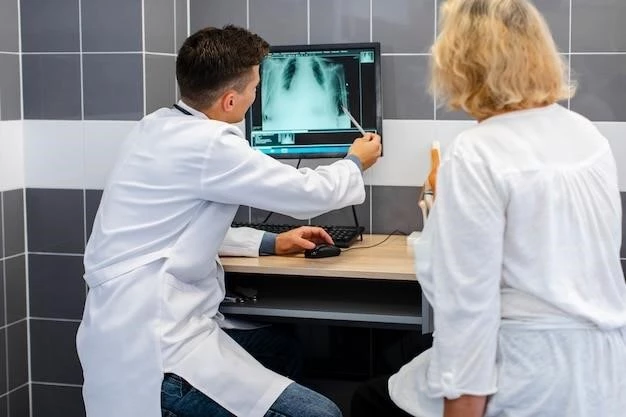Article Plan⁚ Disease ౼ Sponastrime Dysplasia
Introduction to Sponastrime Dysplasia
Sponastrime Dysplasia (SD) is a rare autosomal recessive skeletal dysplasia characterized by spondylar abnormalities, midface hypoplasia, and metaphyseal striations. This condition was first described by Fanconi et al. in 1983, showing a distinctive mix of skeletal and facial abnormalities. Radiographic findings include abnormal vertebral bodies, metaphyseal striations, scoliosis, and delayed ossification in carpal bones.
Individuals with Sponastrime Dysplasia typically exhibit short-limbed short stature, with more pronounced lower limb involvement. The disorder is characterized by disproportionate short stature, spinal abnormalities, and midface hypoplasia with a depressed nasal bridge. Genetic alterations responsible for Sponastrime Dysplasia have not yet been identified, making diagnosis reliant on clinical and radiological criteria.
Manifesting at birth, this rare genetic disorder affects bone development, particularly in the spine and facial areas. Sponastrime Dysplasia presents challenges in diagnosis due to ambiguous clinical features, making radiological findings crucial for accurate identification. To date, research continues to explore the underlying genetic causes and advancements in diagnostic criteria for this complex skeletal dysplasia.
Clinical Features of Sponastrime Dysplasia
Sponastrime Dysplasia presents with a distinct set of clinical features, including a moderate form of dwarfism with pronounced shortness in the lower limbs. Patients often exhibit midfacial hypoplasia, leading to distinct facial characteristics such as a saddle nose and an oriental look; Radiological findings commonly show spinal changes like scoliosis, lordosis, and pear-shaped vertebrae. Other features include metaphyseal striations, disproportionate short stature with exaggerated lumbar lordosis, and coxa vara.
This rare autosomal recessive spondyloepimetaphyseal dysplasia is characterized by unique facial dysmorphism, with individuals showing midface and nasal hypoplasia. Striated metaphyses, spinal abnormalities, and short stature are key clinical hallmarks. Radiological criteria play a vital role in diagnosing Sponastrime Dysplasia, helping differentiate it from other skeletal disorders. The distinctive clinical and radiographic findings of this condition aid in its identification and differentiation from phenotypically similar disorders.
Patients with Sponastrime Dysplasia may also present with short dental roots, childhood cataracts, and hypogammaglobulinemia as additional clinical features. Diagnosis relies on the combination of clinical and radiological features, with radiological criteria being particularly significant for accurate identification. Further studies and advancements aim to enhance diagnostic accuracy and understanding of this complex skeletal dysplasia.
Radiological Findings in Sponastrime Dysplasia
Radiological findings play a crucial role in diagnosing Sponastrime Dysplasia. These findings commonly include abnormalities in vertebral bodies, metaphyseal striations, scoliosis, and delayed ossification in carpal bones. Spinal changes like lordosis, osteoporosis, and pear-shaped vertebrae are typically observed in patients with this rare genetic disorder.
Distinctive radiographic features of Sponastrime Dysplasia also encompass striated metaphyses, highlighting unique skeletal abnormalities. Abnormal vertebral bodies with age-dependent changes and scoliosis are frequently evident in radiological imaging. The presence of retarded ossification of carpal bones further aids in confirming the diagnosis of Sponastrime Dysplasia.
Radiologists and clinicians rely on these specific radiological characteristics to differentiate Sponastrime Dysplasia from other skeletal dysplasias. The detailed radiological criteria developed based on multiple cases contribute to accurate identification and classification of this rare autosomal recessive spondyloepimetaphyseal dysplasia.
Genetic Basis of Sponastrime Dysplasia
Sponastrime Dysplasia is a rare autosomal recessive skeletal dysplasia characterized by specific clinical and radiographic abnormalities. While the exact genetic basis of Sponastrime Dysplasia remains unknown, researchers have identified certain unique features associated with this condition. Mutations in the TONSL gene are believed to be associated with Sponastrime Dysplasia, contributing to the skeletal and facial abnormalities seen in affected individuals.
The pathogenesis of Sponastrime Dysplasia involves complex interactions between genetic factors that impact bone development. Studies using whole-exome sequencing have revealed bi-allelic mutations in the TONSL gene as a potential genetic cause of Sponastrime Dysplasia. These mutations likely disrupt normal skeletogenesis, resulting in the characteristic features of this rare skeletal disorder.
Although causative genetic alterations for Sponastrime Dysplasia have not been definitively determined, ongoing research continues to explore the genetic mechanisms underlying this condition. Understanding the genetic basis of Sponastrime Dysplasia is crucial for improved diagnostic accuracy, genetic counseling, and potential targeted therapies in the future.
Diagnosis of Sponastrime Dysplasia
The diagnosis of Sponastrime Dysplasia is based on a combination of clinical and radiological features, with radiological findings often playing a more specific role in confirmation. Specific radiographic features like abnormal vertebral bodies, striations of the metaphyses, scoliosis, and delayed ossification of carpal bones are key in diagnosing this rare genetic disorder.

Radiological criteria, developed based on pooled information from various cases, aid in accurate identification of Sponastrime Dysplasia. The distinctive radiographic characteristics of Sponastrime Dysplasia differentiate it from other skeletal dysplasias, helping clinicians differentiate and diagnose this complex condition.
As Sponastrime Dysplasia presents challenges in clinical diagnosis due to its rarity and overlapping features with other disorders, radiological evaluations serve as a critical tool for confirming and characterizing this autosomal recessive spondyloepimetaphyseal dysplasia. The development of specific radiological criteria based on multiple cases enhances the accuracy of diagnosing and distinguishing Sponastrime Dysplasia.
Treatment Options for Sponastrime Dysplasia
Currently, there are no specific treatment options available for Sponastrime Dysplasia. Management of this rare genetic disorder typically focuses on symptomatic and supportive care to address the individual needs of patients. The treatment approach aims to alleviate associated complications and improve the quality of life of affected individuals.
As Sponastrime Dysplasia primarily affects bone development, monitoring and intervention by a multidisciplinary team of healthcare professionals may involve orthopedic management, physical therapy, and orthotic devices to support skeletal abnormalities and enhance mobility. Surgical interventions may be considered for severe spinal deformities or orthopedic complications.
Additionally, early intervention and regular follow-ups are essential to monitor disease progression, address secondary complications, and provide appropriate support as needed. Genetic counseling can also play a crucial role in helping affected individuals and their families understand the genetic basis of the condition and make informed decisions.
Prognosis and Complications of Sponastrime Dysplasia
The prognosis of Sponastrime Dysplasia varies depending on the severity of skeletal and facial abnormalities and associated complications. Patients with this rare genetic disorder may experience challenges in mobility and daily functioning due to skeletal deformities and short stature. Managing complications such as scoliosis, coxa vara, and lordosis is essential to improve quality of life.
Complications associated with Sponastrime Dysplasia may include orthopedic issues like joint stiffness, pain, and risk of fractures due to bone fragility. Regular monitoring and intervention by a multidisciplinary healthcare team are crucial to address these complications and provide optimal care to affected individuals.
Additionally, individuals with Sponastrime Dysplasia may face challenges related to facial dysmorphism, dental abnormalities, and ophthalmic issues like cataracts. Early detection and management of these complications can help minimize their impact on overall health and well-being. Genetic counseling can assist families in understanding the implications of Sponastrime Dysplasia and support them in making informed decisions regarding care and treatment.
Research and Advancements in Sponastrime Dysplasia
Research on Sponastrime Dysplasia focuses on elucidating its genetic basis and advancing diagnostic capabilities. Studies aiming to identify causative genetic alterations have highlighted the potential role of mutations in the TONSL gene in the pathogenesis of this rare autosomal recessive skeletal dysplasia.
Advancements in whole-exome sequencing have enabled the discovery of bi-allelic mutations in the TONSL gene, providing significant insights into the molecular mechanisms underlying Sponastrime Dysplasia. These research findings contribute to a better understanding of the genetic pathways involved in bone development and the manifestation of characteristic clinical features seen in affected individuals.
Further research endeavors are directed towards developing more precise diagnostic criteria based on radiological and genetic findings. The integration of genetics and radiology in diagnosing Sponastrime Dysplasia can enhance accuracy and facilitate early intervention strategies. Continued research efforts aim to improve genetic counseling, prognosis prediction, and potential therapeutic approaches for individuals affected by this rare skeletal disorder.
Case Studies and Patient Experiences with Sponastrime Dysplasia
A case study of the 2nd family with Sponastrime Dysplasia describes boy and girl siblings showing clinical features like midface hypoplasia, saddle nose, and spinal abnormalities. Radiologically, they exhibit lordosis, osteoporosis, pear-shaped vertebrae, and striated metaphyses. This rare genetic disorder presents challenges due to its distinct skeletal and facial dysmorphisms.
Another case mentions a white female diagnosed with Sponastrime Dysplasia, inherited in an autosomal recessive manner. The patient displayed short-limbed short stature, facial dysmorphism, and distinct radiographic aberrations. The identification and diagnosis of Sponastrime Dysplasia rely on a careful assessment of both clinical and radiological characteristics.
Sponastrime Dysplasia, an ultrarare skeletal dysplasia, manifests with short stature, short limbs, platyspondyly, and nasal changes. Patients with this condition often face challenges related to their unique bone and facial abnormalities, emphasizing the importance of comprehensive clinical and radiological evaluations for accurate diagnosis and management.
Conclusion⁚ Summary of Key Points on Sponastrime Dysplasia
Sponastrime Dysplasia is a rare autosomal recessive skeletal dysplasia characterized by spondylar abnormalities, midface hypoplasia with a depressed nasal bridge, and striations of the metaphyses. Radiological findings play a crucial role in diagnosing this condition, showcasing abnormalities in vertebral bodies, scoliosis, and delayed carpal bone ossification.
Although the genetic basis of Sponastrime Dysplasia involves mutations in the TONSL gene, definitive causative genetic alterations are yet to be identified. Research advancements aim to enhance diagnostic criteria utilizing whole-exome sequencing and radiological features for accurate identification;
Patient experiences and case studies highlight the challenges faced by individuals with Sponastrime Dysplasia due to skeletal deformities and facial dysmorphism. Prognosis and complications may vary, requiring multidisciplinary care to manage complications like scoliosis, coxa vara, and facial abnormalities.

Ongoing research focuses on improving genetic counseling, prognosis prediction, and potential therapeutic approaches. More precise diagnostic criteria based on genetic and radiological findings are essential to advance understanding, diagnosis, and management of Sponastrime Dysplasia;
